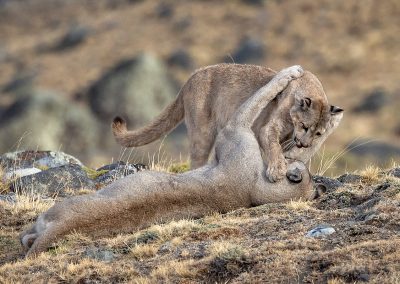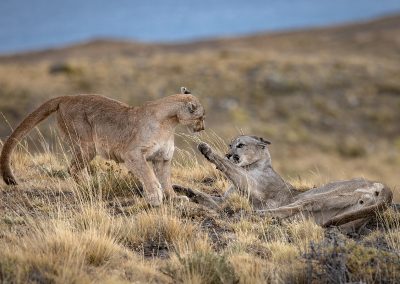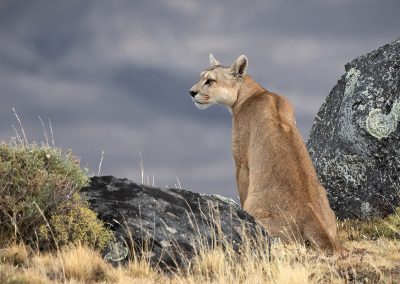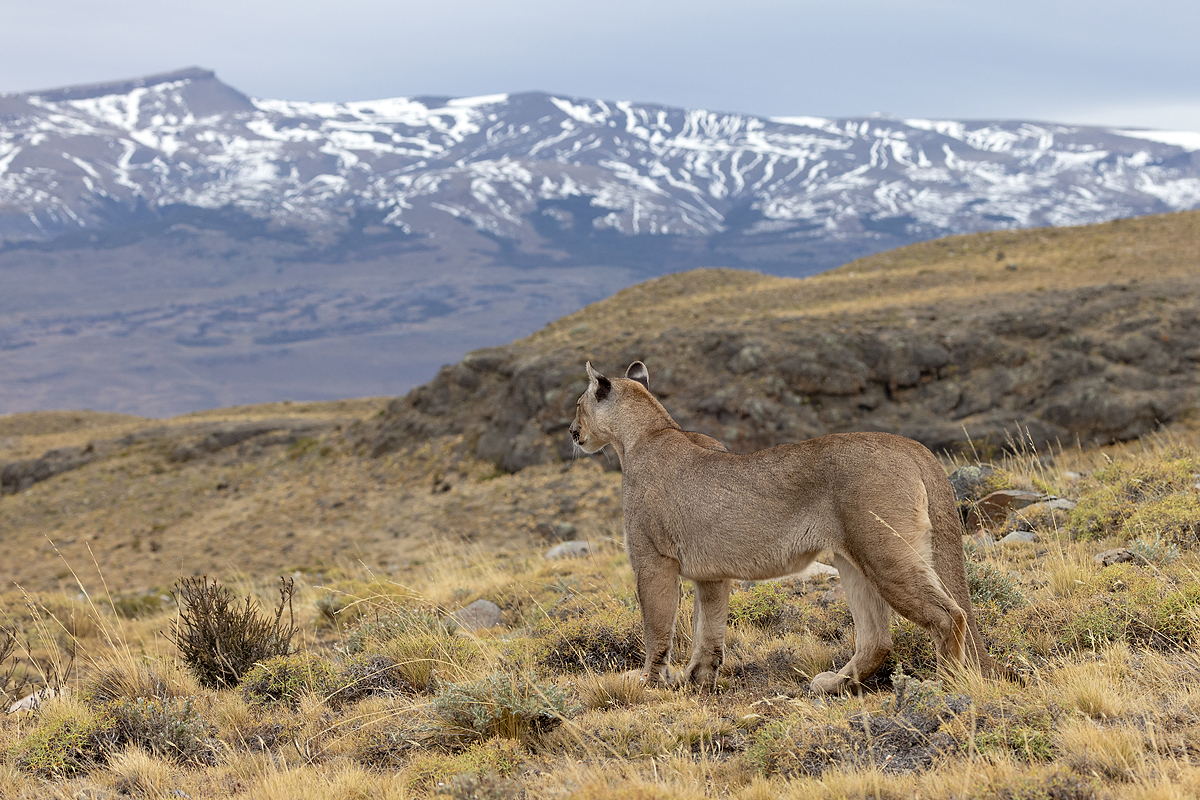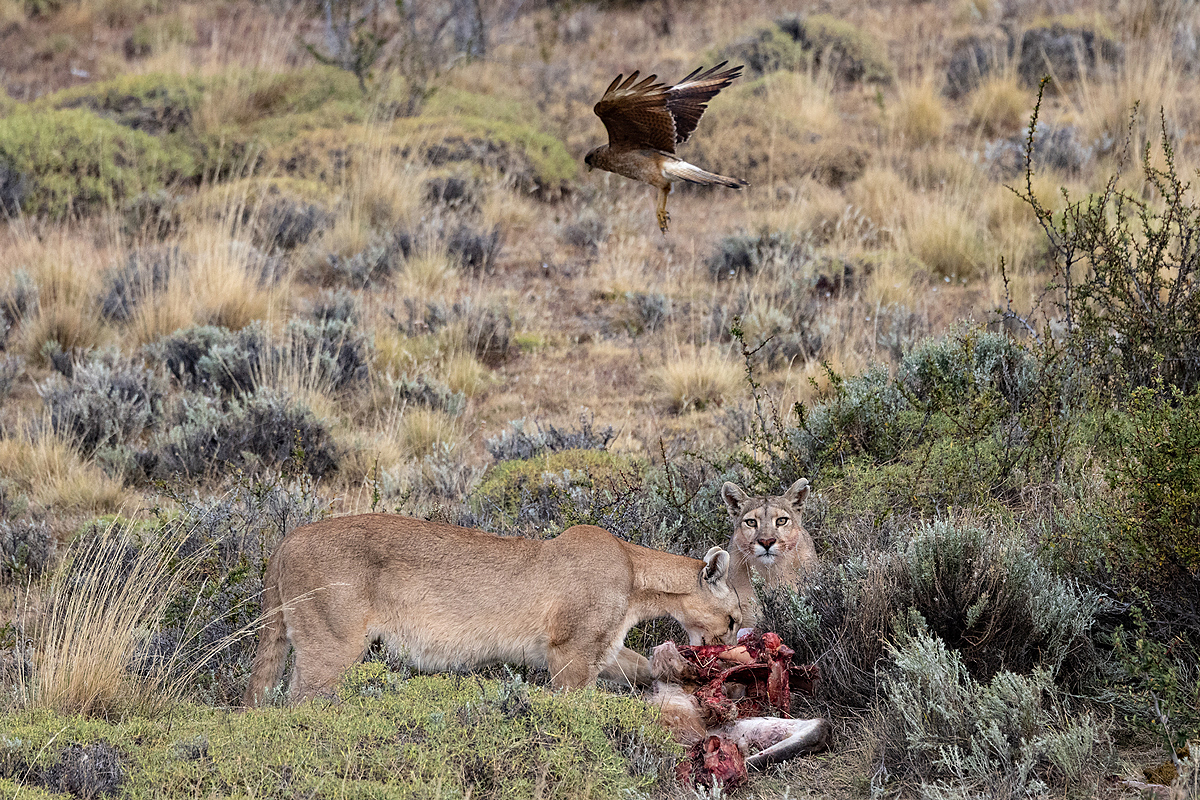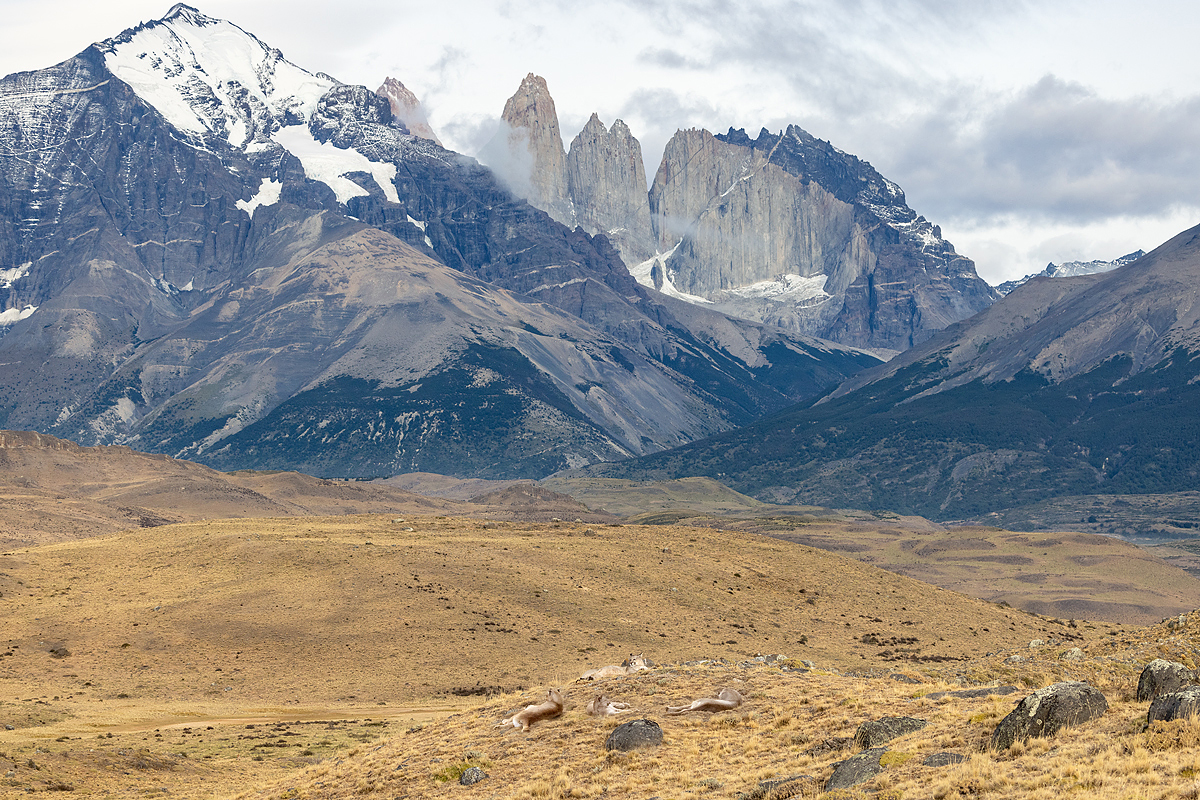Pumas of Torres del Paine

Due to “canine circumstances” this post is long overdue. More than a year ago, in February of 2023 we visited Torres del Paine. The emptiness and the endless landscapes with its mountains and glaciers in Chilean Patagonia awed us. Just like it did thirty years ago during our trip around the world. The light and the colors seem to change constantly due to the ever changing weather. The strong wind creates impressive lenticular clouds, which look like massive spaceships. The vegetation and the wildlife are adapted to survive these harsh conditions.
We were able to catch a glimpse of the lives of the prime predator in this area, the puma. In North America they are called mountain lions or cougars. There their numbers are stable. Here in South America they are in decline. Although the Patagonia sheep farming boom from the late 19th century is history, most ranchers still see pumas as a threat to their livestock.
Back in the days every estancia had a leonero, a gaucho specialized in hunting pumas. Nowadays more and more ranchers aim to combine livestock, wildlife and tourism. Sadly the future of the puma seems to depend on private initiatives. This is one of the many human wildlife conflicts we have witnessed around the world. Governments seem to look away. Thankfully wildlife conservation and tourism sparke initiatives to change the negative perception of the local population and farmers. Nature reserves and parks have been created to act as sanctuaries for wildlife.
In Patagonia the main prey-animal of the puma is the guanaco. With the introduction of livestock towards the end of the 19th century the number of guanacos declined dramatically. This created a human wildlife conflict because the pumas started hunting sheep. Sheep replaced the local wildlife. For the puma their survival became a challenge.
Due to overgrazing of the land towards the second half of the 20th century life stock numbers began to decrease. In addition wool prices dropped dramatically due to the invention of synthetic fibers. This gave the puma a chance to recover. They now enjoy protection in some areas. But of course illegal hunting still occurs.
Due to the above cicumstances it has been historically difficult to observe the natural behaviour of the pumas of Patagonia and there are hardly any scientific studies. Thankfully this is starting to change since the establishment of Torres del Paine national park and private conservation initiatives like at Laguna Amarga and around Cierro Guido estancia.
Pumas are amazing cats. They are very resilient and blend in and adapt to many different habitats and extremely harsh conditions. Their name in the Quencha language means “powerful animal”. It was amazing to see them in the wild. They are very social and interact in family groups. They do not seem to hunt together (yet) but do share kills. We were able to take great pictures of their social behavior due to our amazing guide and tracker, Victor and Nana at Laguna Amarga. We had a great time and hope to be back!


